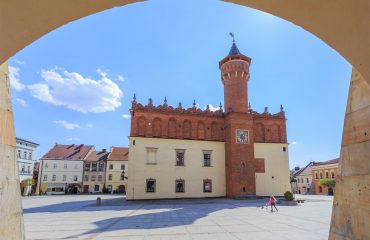GALICIA&BUKOVINA JEWISH HERITAGE 14 DAYS
Group size 10 Start Krakow
Countries 2 End Lviv
-
Reviews 1 Review5/5
-
Vacation Style Holiday Type
-
Activity Level Leisurely
-
Group Size Medium Group
We invite you to discover and explore the world of Jewish people. Galicia and Bukovina are historical regions in Eastern Europe. In geopolitical terms, this territory was strategically important for the Habsburg Monarchy for domination in the Eastern Central-European region. In the 19th century, Galicia and Bukovina were a melting pot of Ukrainians, Poles, Jews, Germans, Armenians, Hungarians, Romanians and other ethnic groups. All this found expression in the architecture of the towns, language, religion, culture and identity of the inhabitants. However, dipping into the Jewish culture of both regions also reminds us of the darkest moments of its history. We can not miss this sad chapters of history, but we still can talk about changes in the perception of historical events. In this trip, you dip into the Jewish culture in Galicia and Bukovina, plunge yourself into the atmosphere of Galician settlements, get to know Jewish and German-speaking writers of Bukovina and reveal diversity of the Jewish religion.

- 12 x nights: 3 x Krakow, 1 x Tarnow, 3 x Lviv, 1 x Brody, 3 x Chernivtsi, 1 x Stryi.
- All-route local English speaking guide or other languages on request.
- Transfers by coach.
- Meals: HB.
- English guided (and other languages) tours: Krakow-city tour, Tarnow and Bobowa-city tours, Lviv-city tour, Chernivtsi-city tour, Zolochiv-city tour, Bolekhiv-town tour, Drohobych-city tour, Zhovkva-town tour; small excursions in Kolbuszowa, Lezajsk, Łańcut ,Ternopil, Brody, Bucac, Sadagora, Kolomyja, Stryj.
- Entrance + guided tour: the Cloth Hall, St Mary’s Church, Jagiellonian University, Wawel Royal Castle, Kazimierz City Hall, Corpus Christi church ,Old Synagogue Remuh-synagogue and cemetery and synagogue Tempel,Galician Jewish Museum, former ghetto and concentration camp in Płaszów and Oskar Schindler Factory in Krakow, Auschwitz concentration camp; concentration village, All Saints Church and the St. Sophia Church in Bobowa, Opera House in Lviv, Zolochivsky castle, gymnasium where Joseph Roth has studied (Brody) ,residence of the Orthodox metropolitans of Bukovina, church of the Nativity, the tomb of St. Lawrence, royal castle in Zhovkva, Easter Egg museum.
- Other highlights: meeting with the employee of Jewish Institute, meeting with the head of Lviv Jewish community, lecture “Chernivtsi – city of the Literature”, visit of the ruins of the homestead of Hasidic Rabbi Israel Friedman in Chernivtsi, talk with the leaders of thecharity community ‘’Hesed Shushan’’.
- Visa Fee
- Travel Insurance
- Flights
- Single Supplement
- Any meals not mentioned
- Any transfers not mentioned (e.g. first and last day)
- Any expenses of a personal nature
- Camera/video permits
- Tips to the guide and driver
-
 Historic city center of Krakow, Poland - view on Adam Mickiewicz monument and St. Mary's Basilica
Historic city center of Krakow, Poland - view on Adam Mickiewicz monument and St. Mary's Basilica
-
 Auschwitz Birkenau a former Nazi extermination camp in Brzezinka, Poland near Oswiecim
Auschwitz Birkenau a former Nazi extermination camp in Brzezinka, Poland near Oswiecim
-
 Tarnow, old town. Northern elevation of renaissance town hall - viewed from arcades of tenement house
Tarnow, old town. Northern elevation of renaissance town hall - viewed from arcades of tenement house
-

-
 shutterstock_430920835
shutterstock_430920835
-
 Market square - historical and tourist centre of Lvov, Ukraine. Historical centre of Lviv
Market square - historical and tourist centre of Lvov, Ukraine. Historical centre of Lviv


Thank you for giving us such wonderful holiday in Ukraine and Poland. We have enjoyed it so much. Thank you for looking after us so well and for your kindness and consideration at all times. The pre-trip preparation, network of on the ground resources and the tour/guide liaisons were top notch. Just a truly professional operation from all aspects.